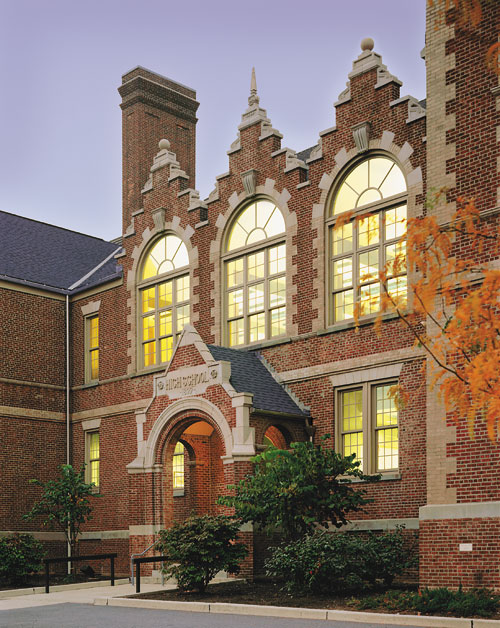Can Existing Schools Get to High Performance? An Update on School Modernization Strategies
Learning Objectives:
- Explain the challenges to and the opportunities for achieving high-performance goals in existing schools.
- Describe how successful sustainable design strategies for brand new schools can be adapted to existing facilities.
- Discuss the financial, environmental and community drivers that are forcing school authorities to shift resources to modernization projects, even as demand for sustainable, "green" schools continues to grow.
- Utilize online sources that track and update rapidly changing national, state and local information about school modernization funding, projects and issues.
- Discuss how two common school improvement measures - replacing unsafe interior glass and replacing windows - can be used to significantly increase a school's energy efficiency, daylighting performance, thermal and visual comfort, acoustic performance and safety.
Credits:
The recognition that the school building itself can deliver "high performance" must be one of the most positive developments in modern education. Dozens of wonderful, innovative new high-performance schools exist around the country, incorporating sophisticated daylighting, advanced HVAC systems and controls, sustainable materials, and a host of other remarkable features from garden roofs and harvested rainwater to outdoor learning spaces and windmills used as teaching tools.
But for every shining new exemplary high-performance school, there are scores of existing schools, most built in a time well before protecting the environment or developing a student's potential by improving the classroom's light was part of the program. Modernization of existing schools often seems to be something of a poor relation to the spectacular new design concepts for schools built from scratch. Achieving high performance in an existing school is hard for many reasons: existing schools are often in less than ideal sites and are oriented "wrong;" materials and systems were probably cheap to start with and are now showing their years of deferred maintenance; and improvements are often done on a district-wide schedule, replacing light fixtures one summer, maybe switching out a few windows next summer, without much attention to the specific needs or possibilities in each individual school.
This is exactly when design professionals who can see the high-performance "big picture" are most needed. Although funding for school modernization is a mixed and shifting picture, as we'll see, federal, state and local dollars are becoming available, and high performance and sustainability are explicit priorities in many of the plans. There are signs that many localities may be shifting resources, for a number of reasons, away from new school construction toward modernization projects. And new products and technological advances are making it more feasible than ever to build high performance into even basic improvement measures.
Improvement projects in schools around the country are going forward, many because the needs have become so critical that delay is no longer even practical, and excellent sources are available to track them. Decisions made now will determine whether the projects will be done in a piecemeal fashion, based mostly on budget or to solve immediate problems, or whether each school upgrade project large or small will contribute to an overall long-term vision for moving the school toward high-performance goals.
 |
The McGinnis School in Perth Amboy, NJ is over 100 years old, but its performance is thoroughly modern, after a modernization including new state-of-the-art windows that let the building's character shine through. The beautiful circlehead windows had been boarded up since the 1950s. Photo: Pella Commercial |










